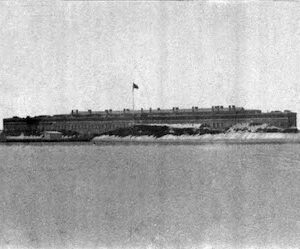Tag: Key West FL
Wikipedia says: Key West (Spanish: Cayo Hueso) is an island in the Straits of Florida, within the U.S. state of Florida.
The Island of Key West is about 4 miles (6 kilometers) long and 1 mile (2 km) wide, with a total land area of 4.2 square miles (11 km2). It lies at the southernmost end of U.S. Route 1, the longest north–south road in the United States. Key West is about 95 miles (153 km) north of Cuba at their closest points. It is also 130 miles (210 km) southwest of Miami by air, about 165 miles (266 km) by road, and 106 miles (171 km) north-northeast of Havana.
American Civil War
During the American Civil War, while Florida seceded and joined the Confederate States of America, Key West remained in U.S. Union hands because of the naval base. Most locals were sympathetic to the Confederacy, however, and many flew Confederate flags over their homes. However, Key West was also home to a large free black population. This population grew during the war as more enslaved black people fled from their masters and came under the relative safety of the Union garrison there. Fort Zachary Taylor, constructed from 1845 to 1866, was an important Key West outpost during the Civil War. Construction began in 1861 on two other forts, East and West Martello Towers, which served as side armories and batteries for the larger fort. When completed, they were connected to Fort Taylor by railroad tracks for movement of munitions. Early in 1864, 900 men from the 2nd United States Colored Troops (USCT) arrived in Key West as replacements for the 47th Pennsylvania Volunteers. Many of these men would see action in southern Florida and the 2nd USCT would become “one of the most active” black regiments in Florida. Fort Jefferson, located about 68 miles (109 km) from Key West on Garden Key in the Dry Tortugas, served after the Civil War as the prison for Dr. Samuel A. Mudd, convicted of conspiracy for setting the broken leg of John Wilkes Booth, the assassin of President Abraham Lincoln.
In the 19th century, major industries included wrecking, fishing, turtling, and salt manufacturing. From 1830 to 1861, Key West was a major center of U.S. salt production, harvesting the commodity from the sea (via receding tidal pools) rather than from salt mines. After the outbreak of the Civil War, Union troops shut down the salt industry after Confederate sympathizers smuggled the product into the South. Salt production resumed at the end of the war, but the industry was destroyed by an 1876 hurricane and never recovered, in part because of new salt mines on the mainland.
Showing the single result
